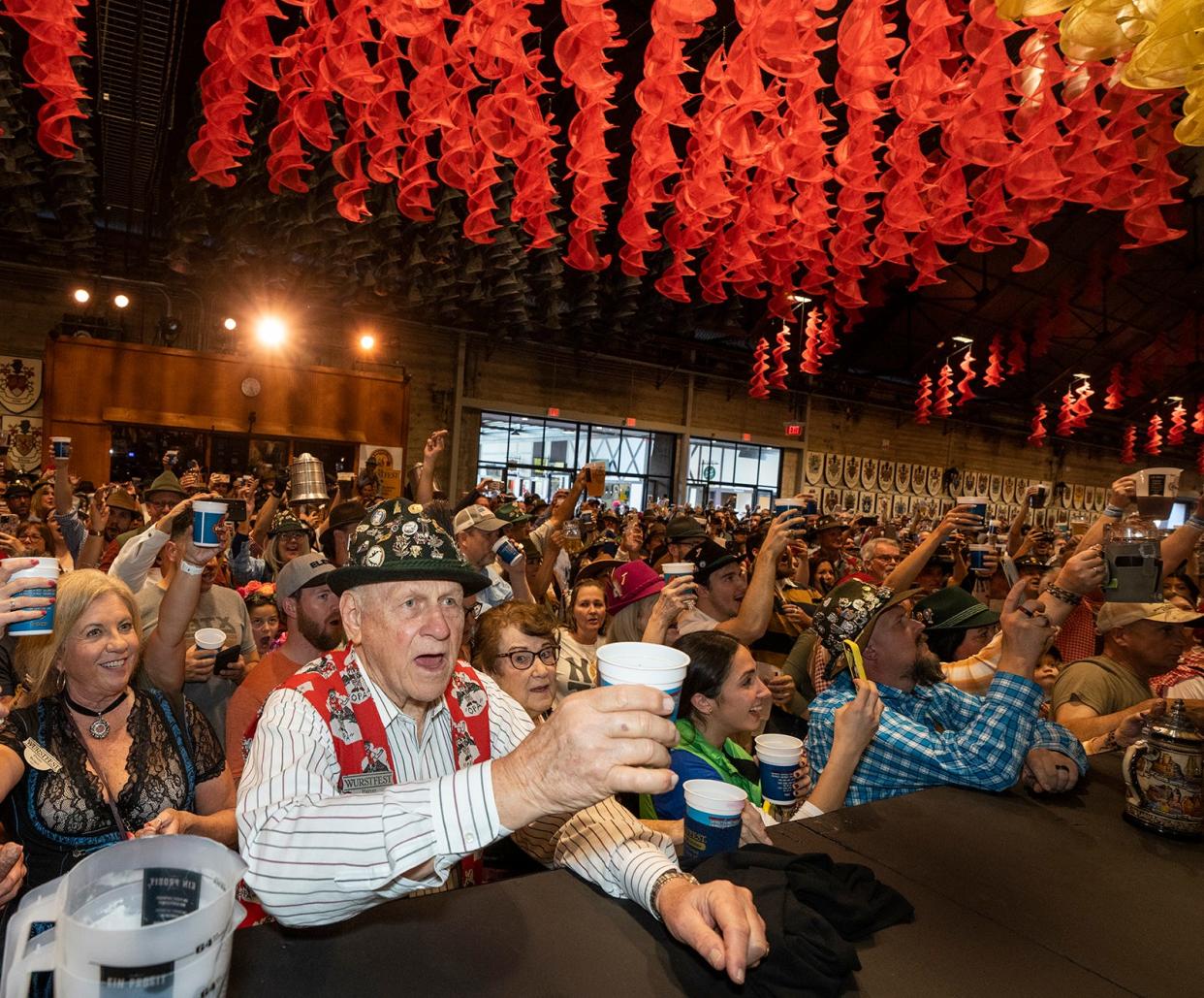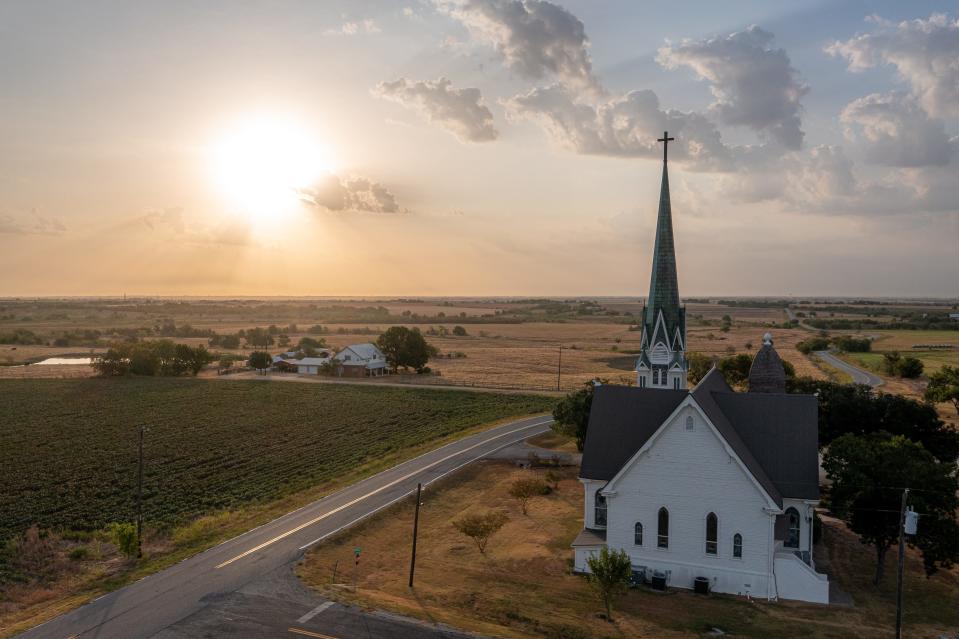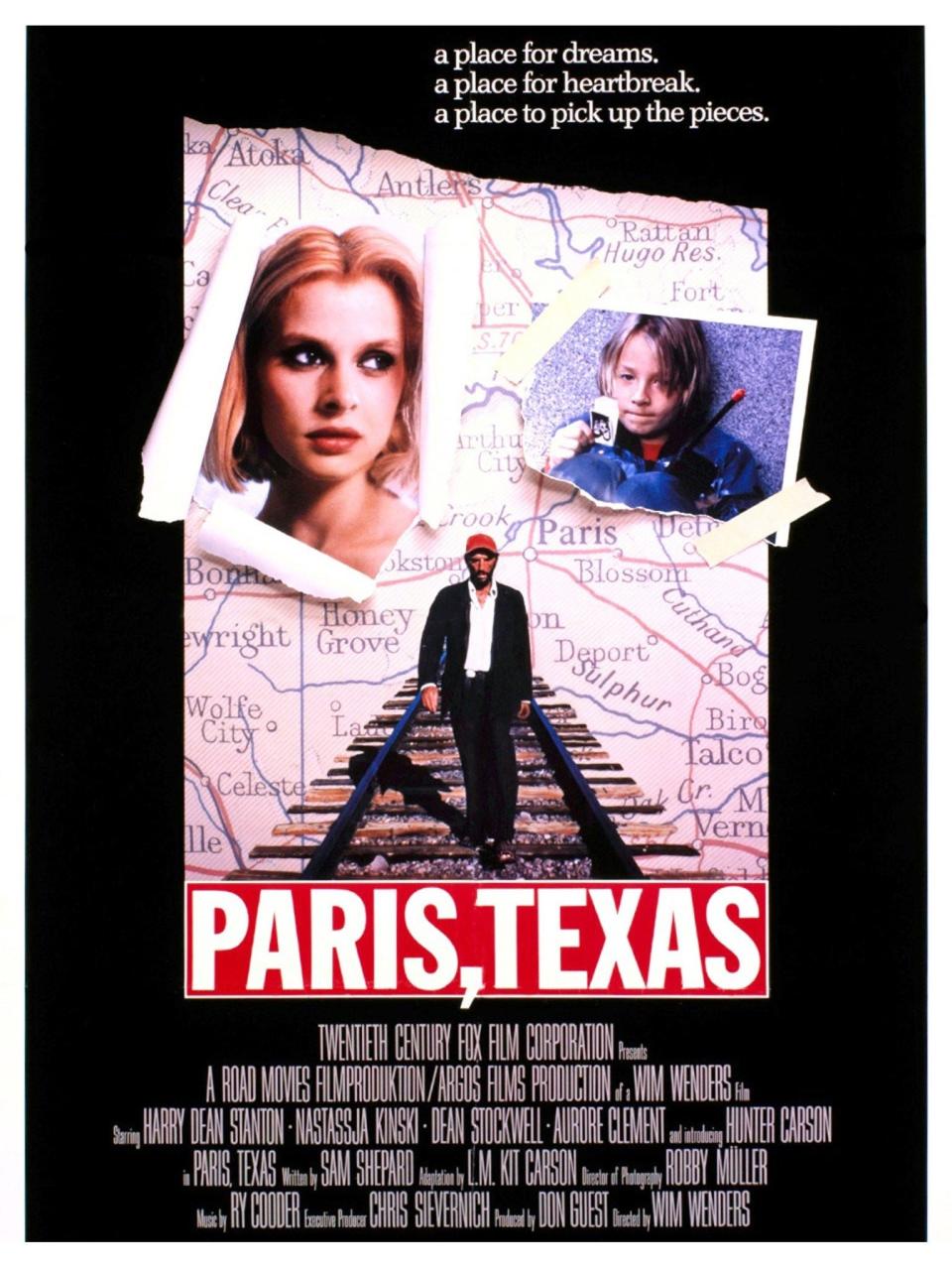From Egypt to Edinburg, which Texas towns are named for faraway places?

Perhaps you've seen social media posts that carry lighthearted headlines such as "Tour the world without leaving Texas."
These posts usually come with a map and some sort of reckoning about the miles you would save by visiting, say, Paris in Northeast Texas, rather than Paris in France.
It's all in good-natured fun.
Today's column drills down a bit deeper by determining how some of those Texas towns earned their borrowed names.
Where can I find out about Texas town names?

Although one can seek the origin stories for many Texas towns by searching the "Handbook of Texas Online," for this column, I turned to three handy books:
"Texas Place Names" by Edward Callary with Jean K. Callary (University of Texas Press): A sturdy, handsome 2020 hardback that often cites key postal records, this book is especially useful for historical towns with multiple names.
"Muleshoe & More: The Remarkable Stories Behind the Naming Texas Towns" by Bill Bradfield and Clare Bradfield (Gulf Publishing Company): A breezy 1999 paperback with bold typography and illustrations, it probes the stories behind more than 700 town names.
"Texas Towns: From Abner to Zipperlandville" by Don Blevins, revised by Paris Permenter and John Bigley (Lone Star Books): A 2018 glove-compartment guide with helpfully numbered maps and stories from late San Marcos resident Blevins, updated by a husband-and-wife team of travel writers from the Hill Country. The town names are divided into thematic chapters such as "Animal Kingdom: From Antelope to Wild Horse" and "Edibles and Drinkables: From Banquete to Teacup."
Texas town names from far away
This is a partial list of Texas towns named for faraway places. Dozens more await glory in future columns, including at least one that will be devoted specifically to Spanish-language place names.
More: Blowout, Ditto and Quicksand: Who named these Texas towns?
Africa (Shelby County): "Freed slaves founded this predominately African American settlement soon after the Civil War," write Blevins, Permenter and Bigley, "which probably accounts for its name."
Athens (Henderson County): Historians are divided on this one: "It was given the name Athens at the suggestion of Dulcena 'Aunt Dull' Avriett, who remembered Athens, Alabama, as a center of culture and learning," write Bradfield and Bradfield. "Some East Texas historians claim Athens was named instead for Athens, Georgia; others contend it was named for Athens, Greece, from which the Georgia and Alabama towns both derived their names."
Bogata (Red River County): Apparently, this is a misspelling of Bogota, the capital of Colombia. "The current designation was suggested by James E. Horner, postmaster, because he had followed the Latin American rebellion against Spain," write Blevins, Permenter and Bigley. "He particularly admired Simon Bolivar. Some believe that Horner actually wanted the site labeled in Bolivar's honor, but the name was confused in some manner, and was recorded as Bogata." Note: The town that did earn the name Bolivar, in Denton County, was named after the Tennessee hometown of Ben Brown, who moved the community to its current site in 1861.
Buda (Hays County): While some contend that this burgeoning suburb of Austin was named for Budapest, Hungary, I'm inclined to go with the story of Buda as a corruption of the Spanish word "viuda," meaning "widow." "The name was supposedly inspired by a widow operating a small hotel here in 1887," write Bradfield and Bradfield, "when this town's post office opened."
Dublin (Erath County): With a name forever associated with Dr. Pepper bottling, the Texas Dublin offers at least four possible origin stories: "Dublin may be a popular etymology of 'double in,' meaning to shelter together when in danger of Indian raids, as the early spelling of 'Doublin' suggests," write Callary and Callary, "or it may be a compression of 'double log cabin,' two log rooms connected by a covered walkway. It may, of course, be a transfer from Dublin, Ireland, or from one of the Dublins in eastern states."
Edinburg (Hidalgo County): "About 1850 near present Hidalgo, John Young, a Brownsville merchant, laid out Edinburgh, named after his birthplace, Edinburgh, Scotland," write Callary and Callary. "Edinburgh was renamed Hidalgo for the county in about 1885. In 1908, Hidalgo County sheriff John Closner, county judge Dennis Bangs Chapin and several others laid out the town of Chapin. After Dennis Chapin became involved in a murder (in San Antonio), the name of Chapin was changed to Edinburg."
Egypt (Wharton County): "According to legend, farms in this vicinity had a bumper crop of corn in 1834 at a time when surrounding communities experienced a crop failure," write Bradfield and Bradfield. "Noting a similarity to the Old Testament story in which Egypt supplied grain when others lands suffered a drought, people began to refer to this settlement as Egypt." Note: The Texas Freedom Colonies Project identifies a post-emancipation colony at nearby Sand Ridge, and Mt. Gilead Baptist Church is a historically Black congregation. On the other side of town, one can find Egypt Plantation, established by William J.E. Heard, and Egypt Cemetery Road.
Florence (Williamson County): I was surprised to find out that this town was not named for Florence, Italy, but I have included it here for its evocative original name: "Florence was known informally as 'Limp Rag' until the early 1850s when the name became Brooksville for Elisha and Sara Florence Lashbrooks, who began farming in the area in 1848," write Callary and Callary. "John Atkinson opened the Florence Post Office on Nov. 25, 1857, named for Sarah Florence Lashbrooks." I can just imagine what sports rivals of today's Florence High School teams might chant if they knew the town's original moniker.
La Grange (Fayette County): "A little settlement had grown up around (Moore's Fort) by 1831, and the town was platted in 1837," write Blevins, Permenter and Bigley. "At the same time, the county became its own entity and was named for American Revolutionary War hero the Marquis de Lafayette. The county seat took the name of the marquis' chateau outside of Paris, France." This is one I had wondered about for decades, including during a recent trip to nearby Monument Hill.
Marathon (Brewster County): "The name was chosen by Albion Shepard, one of the surveyors hired by the Galveston, Harrisburg & San Antonio Railway to locate the routes and lay out the town," write Callary and Callary. "Shepard, the first postmaster in Feb. 13, 1883, was a retired sea captain who said the local terrain, especially the valley and the surrounding hills, reminded him of Marathon, Greece."
Moscow (Polk County): "Founded in 1844 by David G. Green and known as Greens," write Blevins, Permenter and Bigley. "When a post office was approved for the site, a petition was submitted to change the name to Greenville. This was rejected because there was already a Greenville in the state. 'Send in Moscow,' one citizen supposedly said. 'That town is far enough away, there will be no objections.' While this theory has some validity, by coincidence, Moscow, Tennessee, was the hometown of David Green."
Nederland (Jefferson County): "Nederland, literally 'lowland,' the Dutch name for The Netherlands, was founded about 1895 by the Port Arthur Land Company on the line of the Kansas City, Pittsburg & Gulf Railroad," write Callary and Callary. "Arthur Stilwell, the namesake of Port Arthur, named the community for the Dutch investors who had financed many of his business enterprises, including the KP&G."
New Berlin (Guadalupe County): "A large number of early settlers to this region were from Germany," write Blevins, Permenter and Bigley. "They arrived in the 1870s and named their home for the capital city in Germany, thinking that they were setting in motion a new city that might match the achievements of that metropolis. Those dreams never came to fruition."
New Braunfels (Comal County): One of the state's most successful geographic transplants, it was founded in 1845 by Prince Carl of Solms-Braunfels, who led the Adelsverein group. "Inspired by what he had read about Texas, Prince Carl founded the organization, which established colonies in the new Texas republic and sponsored the emigration of German artisans and peasants to inhabit them," write Bradfield and Bradfield. "The settlement was named for Braunfels, Prince Carl's ancestral castle on the Lahn River in the German state of Würtemberg. By 1850, New Braunfels was estimated to be the fourth largest town in Texas."
New Sweden (Travis County): News that Austin Bergstrom International Airport might be renamed reminded readers that eastern Travis and Williamson counties attracted large numbers of Swedish immigrants. This community was named for the New Sweden Lutheran congregation formed in 1887. Its elegant church and steeple still rise like a hymn from the prairies not far from Elgin and Manor. Callary and Callary report that the post office opened Aug. 23, 1887, as "New Sweeden" by postmaster Axel O. Sjoholm (Seaholm). The spelling was changed to "New Sweden" in January 1893. Recently, plans for concrete batch plants have threatened the bucolic rural life in the area.
Odessa (Ector County): "The town was founded in 1881 with the arrival of the railroad," write Blevins, Permenter and Bigley. "A legend credits the name to a Native American princess who wandered into the camp of the Texas & Pacific Railway. More than likely, the name comes from the Odesa situated on the (Ukrainian seacoast), a region West Texas is said to resemble." I'm not buying it. Have you seen Odessa, Texas?
Praha (Fayette County): This town with a glorious painted church has gone by several names. We will skip over the earlier ones. "James C. Duff and William and Leroy Crisswell settled the vicinity in the early 1850s," write Blevins, Permenter and Bigley. "Bohemian pioneers had been arriving in the region since the mid-1850s, and this group was responsible for naming the community, honoring Prague, the capital of their homeland."
Paris (Lamar County): "In 1844, Pin Hook was considered an inappropriate name for the Lamar County seat," write Callary and Callary, "and Thomas Poteet, an employee of merchant Charles Wright, who donated land for the townsite, suggest the name Paris, for Paris, France." Of course, "Paris, Texas" is the title of a moody 1984 Wim Wenders movie, mostly set in West Texas, not Northeast Texas.

Michael Barnes writes about the people, places, culture and history of Austin and Texas. He can be reached at mbarnes@gannett.com. Sign up for the free weekly digital newsletter, Think, Texas, at statesman.com/newsletters, or at the newsletter page of your local USA Today Network paper.
This article originally appeared on Austin American-Statesman: Texas towns were named for cities, sites and nations around the world

